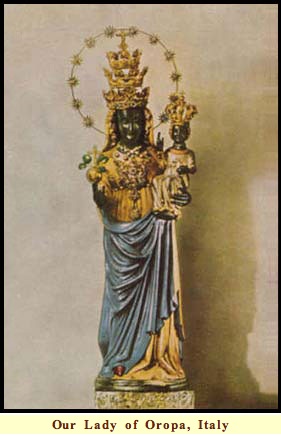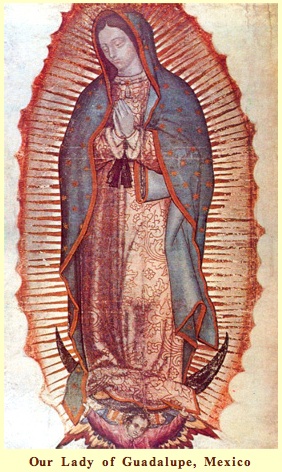
.. in Jerusalem, buried under ancient ruins. He brought her to Italy and installed her in a cave that was a pre-Christian holy site ... It is believed that St. Luke carved this statue. She has worked so many miracles and became so important to the Italians that four Popes crowned her. Hence the 3 crowns and the halo with diamond studded stars. ...
American scholars acknowledge at least 450 Black Madonnas world wide, still counting. They have been reported in: Belgium, Brazil, Croatia, Ecuador, England, France, Germany, Hungary, Ireland, Italy, Lithuania, Luxemburg, Malta, Mexico, Poland, Portugal, Romania, Spain, Switzerland, USA. ( For a list of almost each statue see www.udayton.edu/mary/resources/blackm ) ...
Going back to prehistoric times, black was the symbol for the earth and the Great Mother, the source of heaven and earth. ...
between the 6th and 3th century B.C.E. ... the Celts ... settled all over Central Europe, as far south as Italy and Spain and as far East as Phrygia (in modern Turkey), home of the Goddess Cybele. They traded goods (which always meant also ideas) with the Greeks. ... The Celts were decidedly not interested in centralized authority, institutions, or dogmas. ... One of the oldest names of the earth-mother goddess of Ireland is Cailleach, the "Veiled One" ... the ... 1969 edition of the Encyclopedia Britannica ... in the article on "Celtic Mythology" makes the connection between Cailleach and Kali, the black Hindu goddess ... the old name for Scotland, "Caledonia", ... could be rendered as "land of Kali". ...
Artemis of Ephesus was one of the most powerful goddesses of antiquity. She was a classic black Universal Mother and was older, more powerful, and more primal than her later Greek forms and her Roman equivalent Diana. Her temple was one of the Seven Wonders of the World and the largest building in the world to have been constructed entirely of marble. Her presence inundated the atmosphere of Ephesus ... the city where Mary lived after the crucifixion of Jesus. ...
Some people regard statues of Black Madonnas ... as literally depicting Mary as African ... for the simple reason that that's what she was, a black woman. After all, we know from the Bible that there were African Jews at the time of Jesus. Acts 8:26-40 recounts how an angel sends the apostle Philip to convert a high ranking Ethiopian Jew, who had come to Jerusalem on pilgrimage. That there were intermarriages between Israelites and Ethiopians is attested by the story of Moses marrying a Cushite, i.e. a non-semitic Ethiopian woman, thereby incurring the wrath of his sister Miriam. If Israelites married Cushites, all the more can one assume that they would marry Amhara, i.e. semitic Ethiopians. Considering all the history the Israelites shared with Egypt (including the flight of the Holy Family to that land), one can assume much intermarrying between Israelites and Egyptians of all colors. ...
The Mexicans call ... the Virgin of Guadalupe ...

... La Morenita (the dear dark one) ... a straight line runs down the middle of her dress, dividing it into a light and a dark side...
The Italian Virgins of Montevergine, Somma Vesuviana, and Napoli are all called "Mamma Schiavone", Slave Mama. ... ".